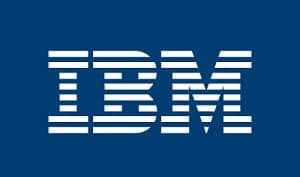Η IBM becomes the first company to manufacture chips with lithography 2 nanometers, characterizing it as an important breakthrough in semiconductor design.
Γto understand what dimensions we are talking about, the 2nm are less than the width of one single-stranded human DNA. Meanwhile, the chip itself is about the size of a human fingernail and is filled with 50 billion transistors.

This all sounds unrealistic at a time when Intel has just taken its first steps in lithography 10nm, while AMD is still in 7nm by TSMC. Of course, it is important to note that comparisons between lithographs from different factories are not entirely accurate, as not everyone counts the same when announcing the lithography technology they use.
However, the news is undoubtedly an impressive achievement on the part of IBM. What IBM considers human nail width is 150 square millimeters, according to what it told Dr. Ian Cutress at Anandtech, so we consider a transistor density 333 million transistors per square millimeter.
How does this data compare to other chip manufacturers? Well, lithography 10nm sqIntel packs 100,76 million transistors per square millimeter, while lithography 7nm by TSMC is located at 91,2 emillions of transistors per square millimeter. IBM 2nm lithography leverages design Triple-stack Gate-All-Around (GAA), as shown in the image above, with cell width 40nm.
In general, packing more transistors per chip can make them smaller, faster, and more energy efficient. In this case, IBM claims that technology nanosheet 2nm can succeed 45% higher efficiency compared to the more advanced chips 7nm today or consume 75% less power at the same level of efficiency.

What does this mean for consumers? According to IBM, possible consequences include quadrupling the battery life of mobile phones (imagine that you only need to charge your phone once every four days instead of every day), faster object detection and response time to standalone vehicles, faster laptops and more. a.
Surely all this is impressive, although we do not know when this technology will find its way into consumer products.
 Do not forget to follow it Xiaomi-miui.gr on Google News to be informed immediately about all our new articles! You can also if you use RSS reader, add our page to your list by simply following this link >> https://news.xiaomi-miui.gr/feed/gn
Do not forget to follow it Xiaomi-miui.gr on Google News to be informed immediately about all our new articles! You can also if you use RSS reader, add our page to your list by simply following this link >> https://news.xiaomi-miui.gr/feed/gn
Follow us on Telegram so that you are the first to learn our every news!





